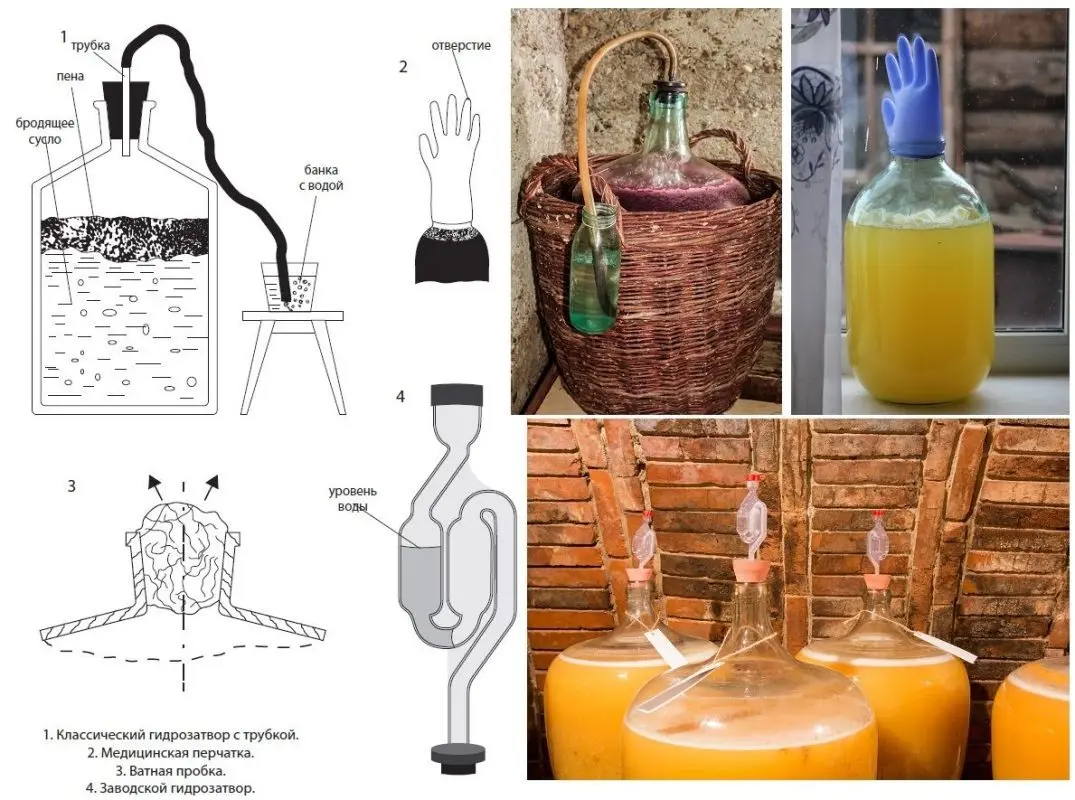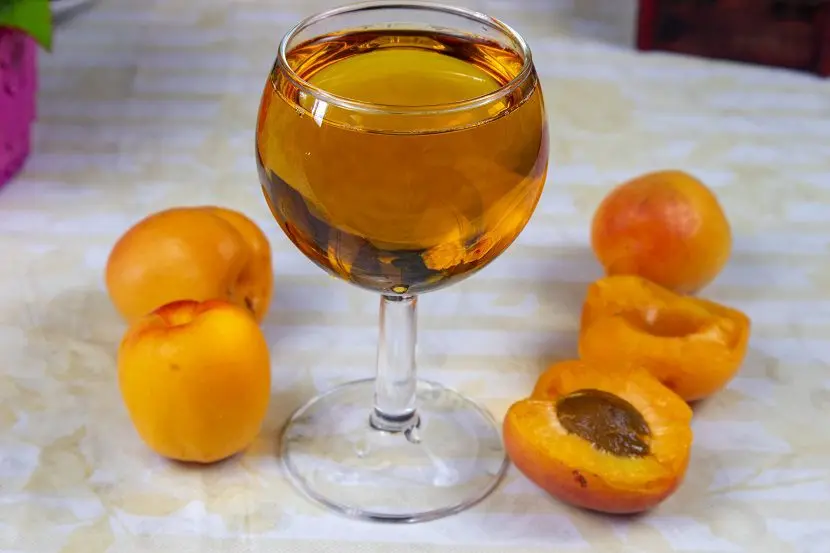First of all, homemade apricot wine is remembered for its beautiful yellowish or red tint, depending on the variety. The only drawback is the lack of a pronounced aroma, but this is more than offset by a pleasant sweet taste. I will tell you how to make wine from apricots according to a simple recipe that has been tested in practice. Of the ingredients, only fruits, sugar and water are needed.
For the preparation of apricot wine, unspoiled (without signs of rot and mold) ripe fruits plucked from a tree are suitable. When using apricots from the ground, an unpleasant earthy aftertaste may appear in the finished drink. I also advise you to remove the bones containing hydrocyanic acid dangerous to health. Stones are not only harmful, they also give the wine a bitter taste and a sharp smell of almonds.
Apricot wine can be made from wild or cultivated varieties. In the first case, a more aromatic, but not very sweet drink is obtained, in the second – on the contrary. Apricots cannot be washed, because wild yeast lives on the peel, which is needed for fermentation. All tools and containers should be pre-treated with boiling water and wiped dry to avoid contamination of the juice with pathogenic microorganisms.
Ingredients:
- apricots – 3 kg;
- sugar – 3 kg;
- water – 10 liters.
Apricot wine recipe
1. Wipe the fruit with a dry cloth, remove the stones. Leave the skin on, as it will largely determine the color and aroma of the wine.
2. Mash the peeled apricots with your hands until a homogeneous liquid mass, put in a large container with a wide neck (pot or bowl).
3. Add warm (25-30°C) water and 1,5 kg of sugar, stir.
4. Cover the container with gauze, put in a warm dark place for 4-5 days. So that the wort does not turn sour, stir 2-3 times a day with a clean hand or a wooden stick, sinking the surfaced pulp inside – the skin and pulp. After 8-20 hours, the first signs of fermentation should appear: foam and hiss. This means that everything is going well.
5. Drain the fermented apricot juice from the sediment. Squeeze the pulp (pulp) through cheesecloth, mix the resulting liquid with juice, add 500 grams of sugar. Mix.
6. Pour the wort into the fermentation tank, filling the bottle to a maximum of 2/3 of the volume to leave room for carbon dioxide and foam. Install a water seal or a glove with a hole in the finger (pierce with a needle).

7. Place the vessel for 25-60 days in a dark place with a temperature of 18-28°C for fermentation. 5 days after installing the water seal, add 500 grams of sugar. To do this, drain 200-250 ml of fermenting juice, dilute sugar in it, pour the finished syrup back and close it with a water seal. After another 5 days, repeat the procedure by adding the remaining sugar (500 grams).
If fermentation does not stop after 50 days, so that bitterness does not appear, I advise you to drain the wine from the sediment and put it under a water lock.
8. When active fermentation is over (signs: the water seal does not gurgle for several days, the glove is blown off, the wort is clarified, sediment has fallen at the bottom), drain the young homemade apricot wine from the sediment through a thin tube into another container.
Taste, you can add more sugar to increase sweetness or fix with alcohol (vodka) about 2-15% of the volume. Fortified wine made from apricots is a little tougher than usual in taste, but it is better stored.
Fill containers for aging with wine up to the neck (preferably to avoid contact with oxygen), seal hermetically (if sugar was added at the previous stage, then first keep it under a water taint for 7-10 days in case of repeated fermentation). Transfer to a refrigerator, cellar or other room with a temperature of 5-12°C, leave for 2-4 months to ripen. This time is enough for the wine to infuse and become tastier.
When a sediment of 2-5 cm appears (at first every 15-20 days, then less often), filter the drink by pouring (decanting) into another container. The wine is considered ready when the sediment no longer appears. In this case, the wine can be bottled for storage or left in the same container, there is no fundamental difference.
The output is homemade apricot wine with a strength of 10-12% (without fixing). In the cellar or refrigerator, the drink can be stored for up to 3 years. The yield is approximately 60% of the original volume of must before fermentation.










